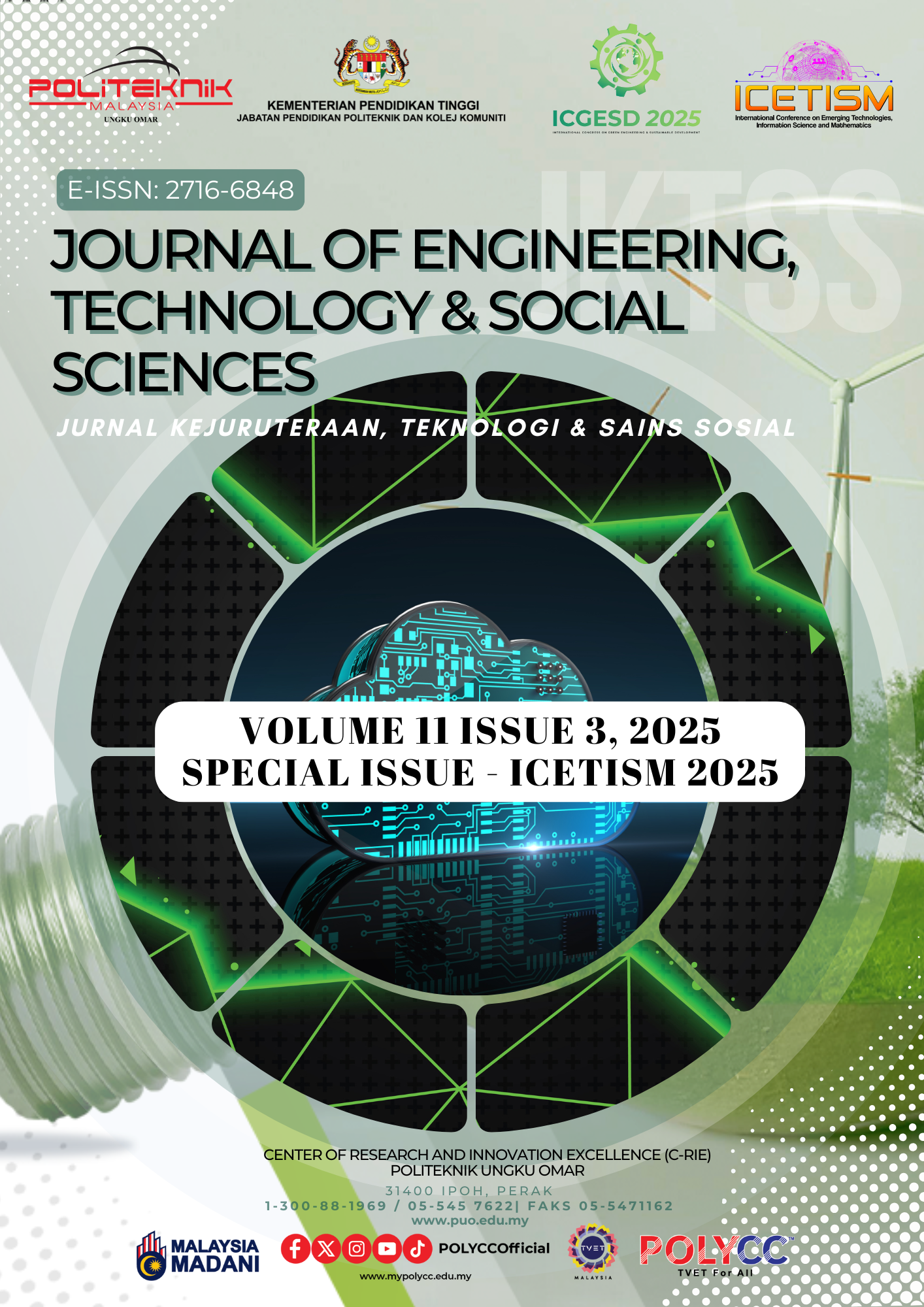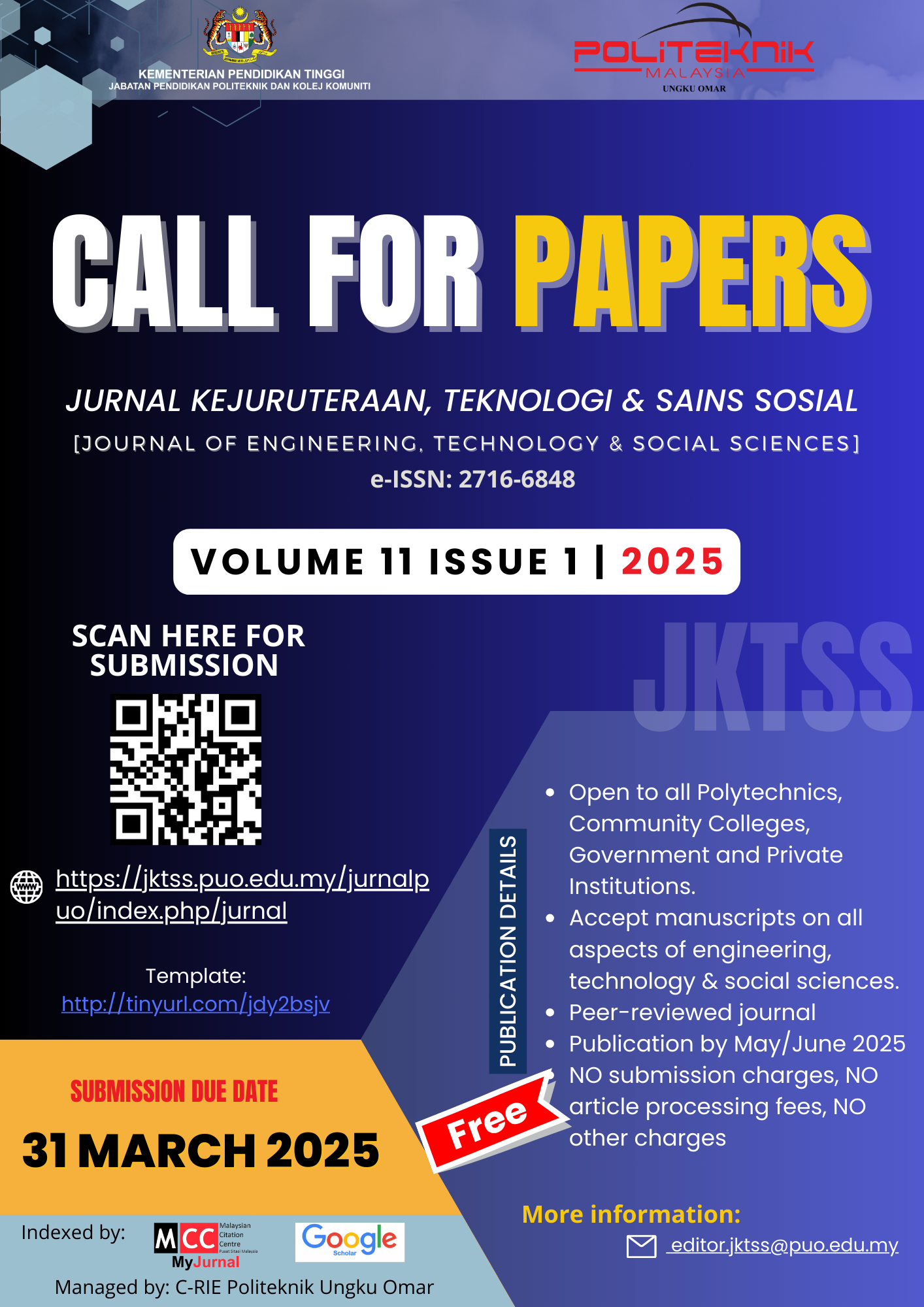ENHANCING DUST MANAGEMENT IN MINING OPERATIONS: EXPLORING INNOVATIONS IN PREDICTIVE MODELLING AND MACHINE LEARNING
Keywords:
Dust Monitoring; Machine Learning; Predictive ModelAbstract
The ecological issue posed by particulate matter (PM) in surface
mines is substantial. Precise quantification of particulate matter
(PM) concentration is necessary to formulate efficacious
approaches for mitigating and regulating PM. This study aims to
present a viable strategy for the proactive control of dust
concentration by leveraging predictive modelling and machine
learning techniques. The study used the Thermo Scientific Air
Quality Dust Monitor (ADR1200) to assess real-time data collected
from the FYS granite quarry in Malaysia. The acquired datasets
were analyzed using three machine learning algorithms: decision
trees, random forests, and linear regression. The algorithms
accurately predicted and anticipated the optimal dust concentration
in the quarry. The analysis yields a linear regression model that
exhibits highly favourable outcomes. Precisely, the minimal mean
squared error (MSE) is calculated to be 17.6, the coefficient of
determination (R-squared) is determined to be statistically
significant at 0.96, and the mean absolute error (MAE) and root
mean squared error (RMSE) are relatively low, measuring at 4.195
and 1.81, respectively. With a 96% account for the variability, the
model demonstrates a robust capacity to elucidate the dust
concentration data and exhibits exceptional predictive accuracy.
This strategy aligns with the Sustainable Development Goals (SDGs
3, 9, and 13), which aim to improve health and foster innovation in
the industry.










